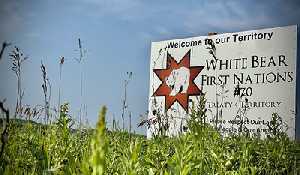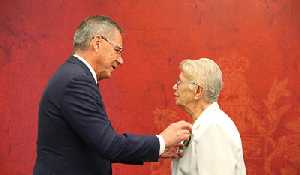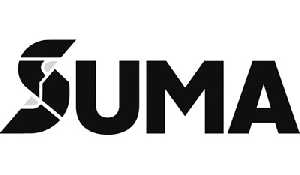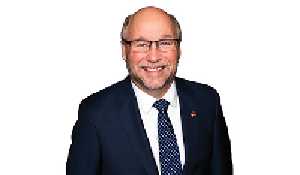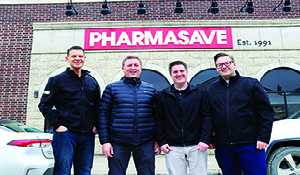Rocanville reeve says potash sharing should be scrapped
April 1, 2014, 1:59 am
Kara Kinna


RM of Rocanville Reeve Murray Reid agrees with Rocanville town council that the potash tax sharing system isn’t perfect.
But while the town argues that urban municipalities should be entitled to more than 10 per cent as it receives under the current formula, Reid suggests that the entire structure should be scrapped and potash mines should be taxes by the municipality in which they are located, just like any other business.
“I’m hoping they just cancel the whole act, which would be ideal,” Reid says. “It’s just not fair, period, that’s it.”
Reid argues that the entire potash tax sharing system is unfair to the mines, the municipalities they reside in, and especially to PotashCorp Rocanville.
Under the current system, potash mines pay tax based on their production. That tax money is put into a pot, which is shared among all of the municipalities within a potash tax sharing area. Both PotashCorp Rocanville and Mosaic Esterhazy make up one area, which is referred to as the “Esterhazy” area of influence, with all communities within a 20 kilometre radius of those mines receiving a portion of the potash tax in the pot.
Reid points out that, because PotashCorp Rocanville is a higher producing mine, over half of the tax money collected within that area comes from PotashCorp Rocanville, however the communities closest to PotashCorp Rocanville receive far less than half of the tax money collected.
For example, Reid says the RM of Rocanville, where the mine is located, got about one-third of the potash tax collected from PotashCorp Rocanville in 2013, while the rest was divided between the other municipalities in the potash tax sharing area, regardless of if they have a mine in their municipalities or not, and regardless of how close they are to PotashCorp Rocanville.
“Can you imagine if the town of Rocanville got 10 per cent of that?” he says, referring to the $3.6 million in potash tax collected from PotashCorp Rocanville alone in 2013. “They could go out and build a subdivision every year.
“A municipality with no mine can get more than a municipality with a mine, and PotashCorp puts half the money in the pot, so at Churchbridge and Bredenbury, they are how many miles from the mine, and more than half their money comes from down here.”
Urban municipalities receive a 10 per cent share of the potash tax collected, with rural municipalities dividing the other 90 per cent. Reid doesn’t agree with the town of Rocaville’s thought that it would be more beneficial if urban municipalities received a larger percentage.
“I wish they would have talked to us,” he says. “Why do they want more the same for the towns? To get 20 per cent so the towns up north get 10 per cent more, and most of the money comes from 10 miles from where they live? It’s not real well thought through. I don’t know what the thinking was there.
“If the town thinks they’d be getting anything by expanding to 20 per cent under the existing system, all it means is that towns further away are getting more from our municipality,” he says.
He points out that the problem is exacerbated by the fact PotashCorp Rocanville is so close to the Manitoba border, so much more of the “Esterhazy” potash tax sharing area is the area within 20 miles of the Esterhazy mine, since much of the area that would potentially be part of the Rocanville sharing area is in Manitoba and out of the equation.
As some municipalities have increased their mill rates over the years, the RM of Rocanville’s share of the funds it collects from PotashCorp Rocanville has decreased. In 1997, the RM received back 49 per cent of the funds it collected from PotashCorp Rocanville and paid to the potash sharing board. By 2012 that was down to 31 per cent.
Reid says the system is also unfair to the mines, which would be paying far less tax if they were simply taxed by the municipalities where they are located, like all other industries, instead of being taxed on their production.
“The mine would be paying a lot less. How can we justify $3.6 million from the mine?” he asks. “If that was a coal mine or an oil well or a fertilizer plant, or pipeline like Moosomin has, we wouldn’t even be talking today. Because everybody looks after themselves (in those cases), but this is kind of a convoluted idea.
“Our preference would be to scrap the whole thing and do road maintenance agreements with our neighbors.
“Tax it like everyone else and then we can work out road maintenance agreements with Spy Hill because Spy Hill needs something. There is a road that comes across north of the mine to get all the traffic from Langenburg and Esterhazy, so definitely they should get something from PotashCorp.”
Reid says the RM needs the money it receives from potash tax sharing, pointing out that the RM has two-and-a-half miles of heavy haul road which services the mine as well.
